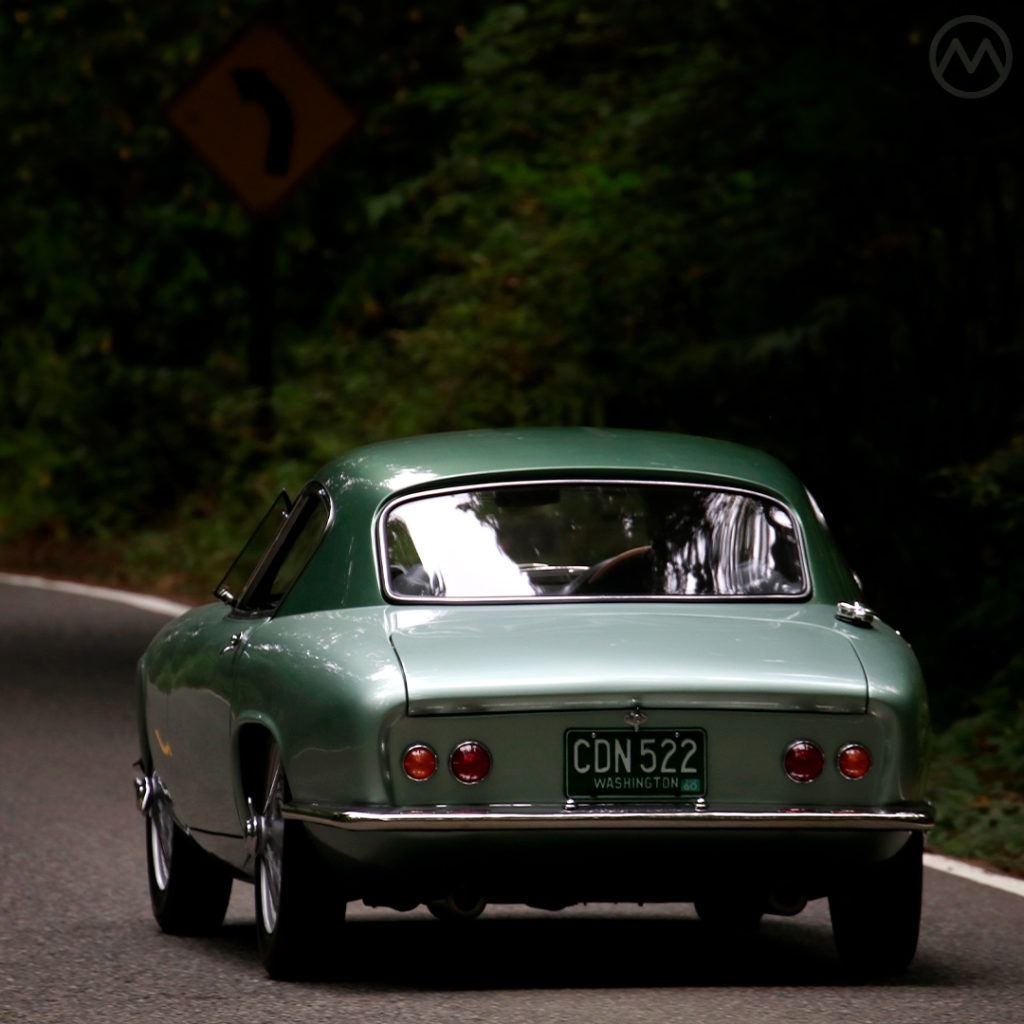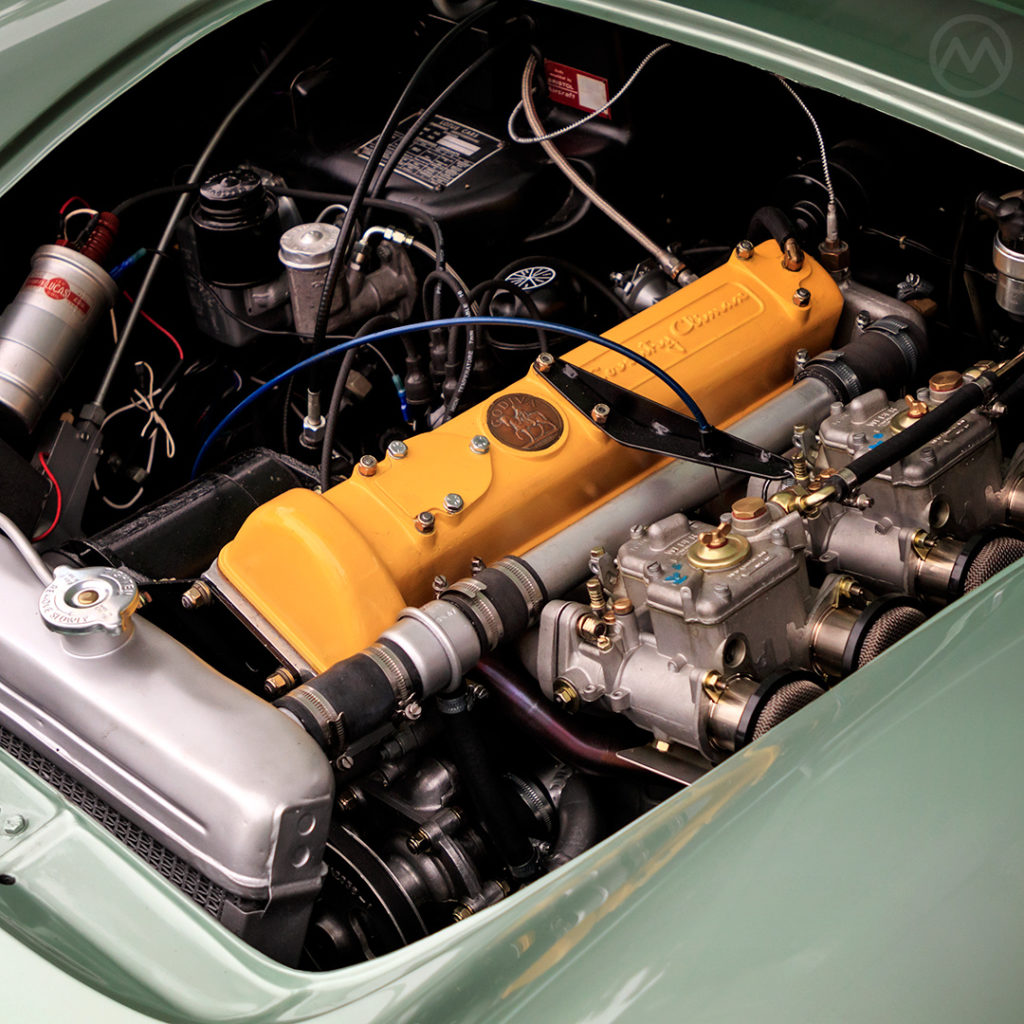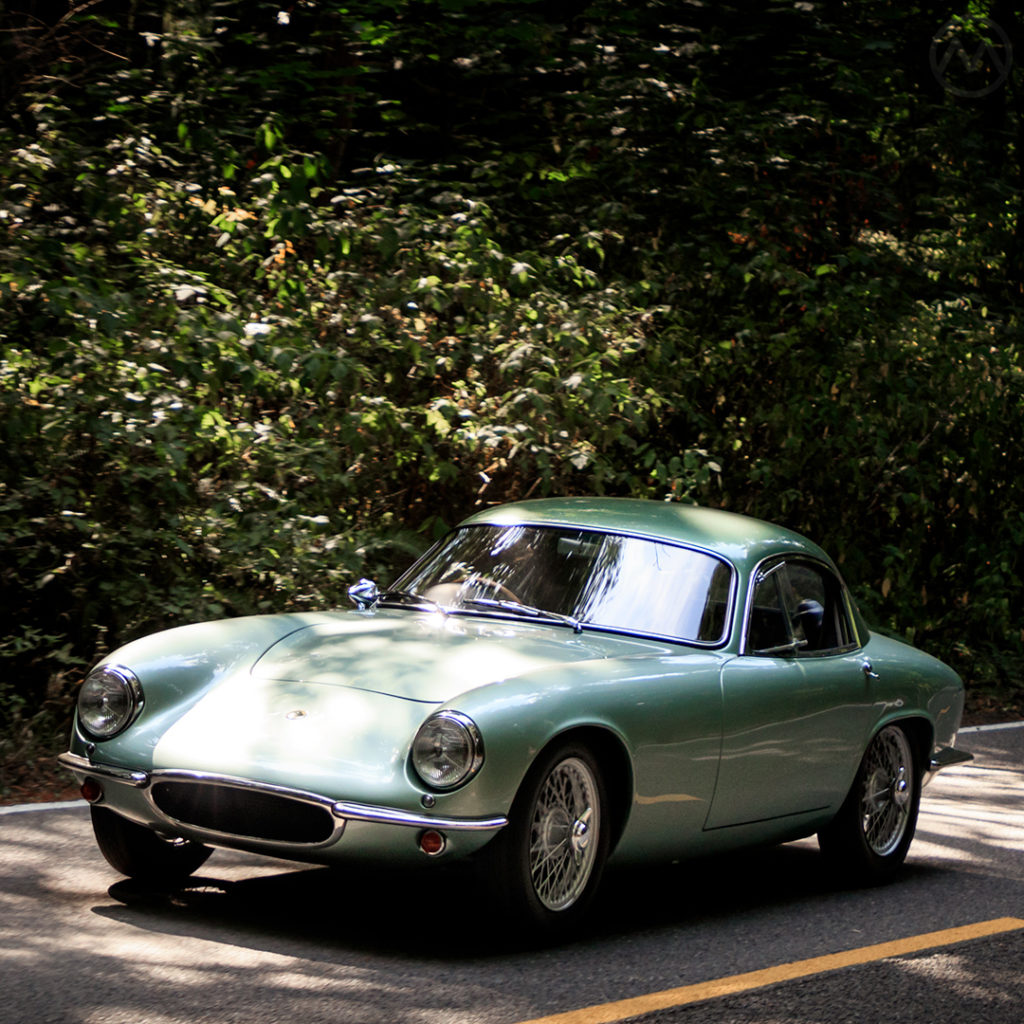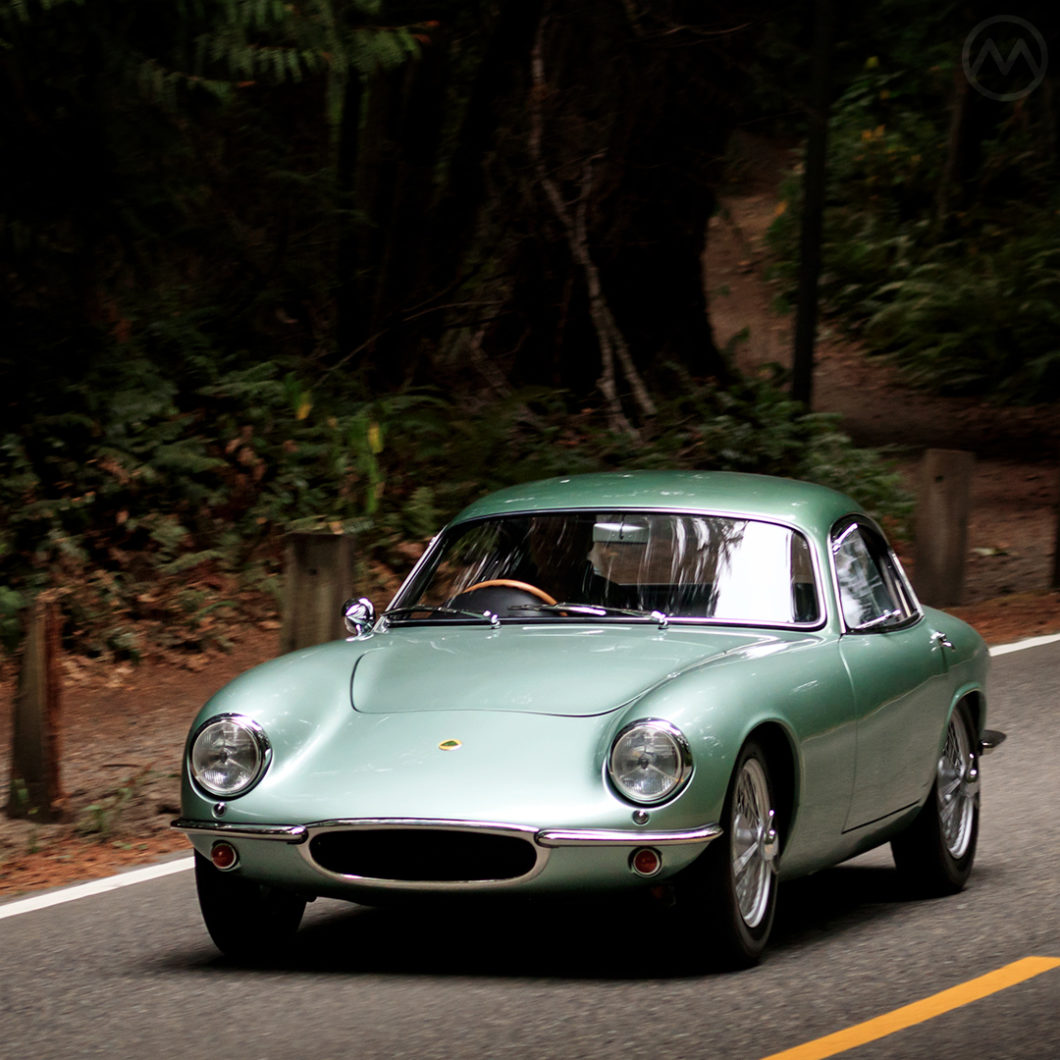When the Type 14 Lotus Elite wowed the crowd at Earls Court in 1957, just nine years had passed since Colin Chapman had built his very first race car. After a meteoric rise in motorsport, the Elite would be the company’s first road car, which Chapman hoped would build the company’s profile and also help pay for his nascent Formula 1 experiment.
The Elite’s styling, penned by moonlighting accountant Peter Kirwan-Taylor and refined by aerodynamicist Frank Costin, was what caught most observers’ attention, but it’s real innovations lay beneath. The car was the very essence of Chapman’s “add lightness” ethos, but also had the typical Chapman problem of being a little too light, and thus quite fragile.
Despite its shortcomings, all of which informed the design of later Lotus models, the original Lotus Elite was nevertheless the car that took the company from a maker of track day toys in a disused stable to a proper car manufacturer, and it set the stage for many subsequent models.
Add Lightness
Anthony Colin Bruce Chapman was born the 19th of May, 1928, the son of a hotelier in Muswell Hill, North London. Later on nearby Hornsey, where the hotel was located, would become the birthplace of Lotus Cars, as well.
Too young to serve in the war, Chapman studied structural engineering at University College London before serving in the Royal Air Force in 1948 and 1949. It should come a structural engineer who learned to fly fighter planes would’ve been interested in lightweight materials, but long before fiberglass it was Aluminum* that Chapman worked most with. Post-RAF, he took a full time job with British Aluminium.
Long before that, however, he was already interested in motorcycles and fast cars, riding a Panther 350 in his late teens and then being given a 1937 Morris 8 as a Christmas gift. During his time at college he met Hazel Williams, without whom Lotus would not have been possible.
After a long courtship they married in 1954, but it was Hazel who provided Chapman with the funds and encouragement to build his first racer (in a shed in Muswell Hill), the modified Austin 7 later known as the Lotus MkI, in 1948. Williams also put up the money (£25) to officially charter the company in 1952. She would remain a power behind the throne until after Chapman’s death 30 years later and only recently passed away, at 94.

While still at school Chapman and friend Colin Dare began flipping used cars, often using the space behind Hazel’s home to stash cars. In 1947, that business largely disintegrated, leaving Chapman with a 1937 Austin 7 to get rid of. Instead, he heavily modified the car into what became retroactively known as the Lotus Mk1.
An off-road Trials car, Chapman created his own lightweight aluminum body for the car and heavily modified the suspension, earning him two class wins. In late 1948, he tried again with the MkII, now with Ford power and raced on pavement as well. After trying out 750 Motor Club racing, he concentrated his efforts on track cars, and the MkII was sold to Mike Lawson, an influential racer who happened to be Stirling Moss’ cousin.
1951’s MkIII got enough attention that he started building them for other people, with the help of volunteers and friends but still in the lockup behind Hazel’s house. By the end of the year larger premises, disused stables behind the Railway Hotel in Hornsey, had been acquired and on Jan 1, 1952, the Lotus Engineering Company came into being.
The next five years were a whirlwind of excitement as each club racer was faster than the last and demand only increased. By the end of 1953 Chapman was working with Frank Costin on a fully-enclosed car (MkIV) and had introduced a production racer, the MkVI, direct ancestor of the famous Lotus Seven. By 1956 the company could boast class wins at LeMans and it was time for Formula 2 (with the Lotus 12) and Formula 1 (with the Lotus 16).

Creating the Lotus Elite
The Lotus MkVI was sold as a kit rather than a full car, and primarily to privateer racers. One of many such cars in the 1950s, Lotus’ other race cars quickly gained so much attention that the cars were quite in demand. But no kit car was going to fund a proper Grand Prix team, and Champan’s racing ambitions dictated having something more premium to pay the big bills taking on the world’s fastest racers would create.
While “add lightness” had characterized all of Lotus’ minimalist race cars, that was a more difficult brief in designing a road car. The existing designs would inform the Elite’s mechanical pieces but in one major departure, the body would be built in fiberglass. This plastic fantastic form was enormously popular with sports car builders in the 1950s since it allowed complex forms to be produced far cheaper than hammering them out in metal, but the Elite would not be quite like other fifties fiberglass wonders.
Until the Elite (and in most cases after it), fiberglass sports cars mounted their bodies to a metal frame. In the case of most 50s British specials, it was a donated frame from an Austin 7 or Ford Popular, cheap and available. The Lotus, however, used no frame at all.
Instead, it was a fiberglass stressed unibody with a steel subframe for the engine and front suspension and a steel box section around the cowl for crash safety and door hanging. All of the rest was load-bearing. The result weighed just 1,700 lbs., and the contractor who built the original bodies, Maximar Boats, was penalized if they went over a certain weight in each body, a number pegged at just 305 lbs.
This would prove a fraught choice, as while the car would bear the weight of the mechanicals and the driver, the early bodies were so thin in places that they could be flexed by hand, and according to company legends, one of the prototype Type 14s actually had its differential rip away from its mounts, shades of things to come.

Earls Court and Refining the Type 14
The body may have been revolutionary in terms of structure, but it was tailored with a stunning shape. Peter Kirwan-Taylor started drawing cars as a small child, and as his stepfather was the chairman of Lagonda and Westlund, he was often surrounded by engineering luminaries long before he met Chapman, including W.O. Bentley and Teddy Petter.
After WW2 he worked primarily as a financier and accountant, but he was always dabbling in cars. He designed a coupe version of the Swallow-Doretti sports car and built his own Lotus MkVI, which is how he came to know Chapman, later advising him that he should fit a closed coupe body on the Lotus 11 to make it slipperier in racing. Chapman demurred, but the suggestion led to Kirwan-Taylor’s design for the Type 14. Later on, Kirwan-Taylor would also design the Citroën Bijou and regularly consult on Lotus projects.
While Kirwan-Taylor designed the shape, aerodynamicist Frank Costin and then-Ford staffers Ron Hickman and John Frayling helped refine it into its final form. It had a drag coefficient of just .29, something even most modern, aero-optimized cars can’t match.
The car, along with the refined Lotus Seven, debuted at the Earl’s Court show in October of 1957 following many long months of making the molds for the body and testing out the prototypes that were built at Hornsey. While the Seven replaced the more rudimentary MkVI, it was still aimed at Lotus’ traditional customers. The Elite, on the other hand, was named for exactly the people Chapman wanted to buy them.
The ultra low weight, of course, meant that the Elite could easily exploit its tiny, SOHC 1.2-liter Coventry Climax FWE engine, which made between 75 and 90 horsepower depending on the series and could be tuned for up to 105 horsepower in racing applications. Many enterprising Elite owners also fitted larger Coventry Climax units and heavily tuned them.
Like the Lotus racers, it handled like it was on rails and the sleek shape gave it plenty of top speed stability, but the early lightweight body proved as robust as an eggshell. Under heavy load, the suspension attachment points could rip away from the body, leaving the car totally disabled. Nor was this behavior confined to just those pieces – the car was too light, and too frail.

Lotus Elite Series 2
The Elite quicky accomplished its mission, being a good seller from the start even by the small standards of Lotus in the 1950s, and the company’s Grand Prix endeavors soon earned it even more worldwide acclaim. On May 29, 1960, the company celebrated its first F1 win at Monaco, which only created more interest in both the racers and the road cars.
The Elite was a joyful experience from the driver’s seat, but the car’s basic fragility was a major problem and soon soured some buyers. The car was still fairly safe, as few of the breakages resulted in catastrophic accidents, but nobody wants a car that tears its mechanical pieces away from the body. This was not helped by the car’s clientele.
Though designed as a road car and meant as a money-spinner as much as a prestige project, the Elite was meant to be used on-track or off, and it was a hugely successful racer (when it finished races), scoring many class victories at LeMans and at the Nürburgring. The aerodynamics were so good that a modified Elite with a 2L Coventry Climax was once clocked at 174 mph.
Quality on the Elite was also compromised by all the light components, which were often similarly frail and often overstressed. While Lotus racers would recognize all of these company traits as endemic to Chapman’s philosophies, they weren’t welcome in a road car, even one with a competition bent. Race cars periodically get rebuilt and their lives are measured in hours of use, like airplane engines. Cars you use every day have to be more robust.
To alleviate the body issues, Chapman changed body suppliers from Maximar to Bristol Aeroplanes for the Series 2 cars after about 200-250 examples had been built. The Bristol shell, a little thicker and slightly different, proved more robust but didn’t entirely cure the issue. Lotus learned a critical lesson on the limits of lightness as a result. For the next Lotus road car, the Elan, Chapman and his team created a backbone chassis on which to mount the lightweight fiberglass body.
Nevertheless, the Lotus Elite was light, fast, and looked great. Between 700 and 800 more Series 2 cars were made before production ended in 1963. Sources vary on how many were made, but the consensus is between 1,030 and 1,050. As with any semi-exotic sports car, the Type 14 was almost instantly recognized as a future classic and a high percentage of the production run survives.
The name resurfaced in 1975 when Chapman sought to take the entire Lotus car line into premium supercar territory, but that’s a story for another day.



Hi, I first fell in love with Lotus in 1961 when I saw my first in a sales lot in Tucson, AZ. It has been Lotus since, most recently as the owner of an Elise from 12/2004 through 11/23. I still have a love of the Type 14 Elise. I currently own a 2015 Porsche Cayman and a 2019 Subaru WRX. Either or both of which I might be willing to sell if I acquired a Type 14 Elise (preferably a Type 2). Let me know as others become available.